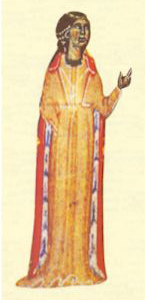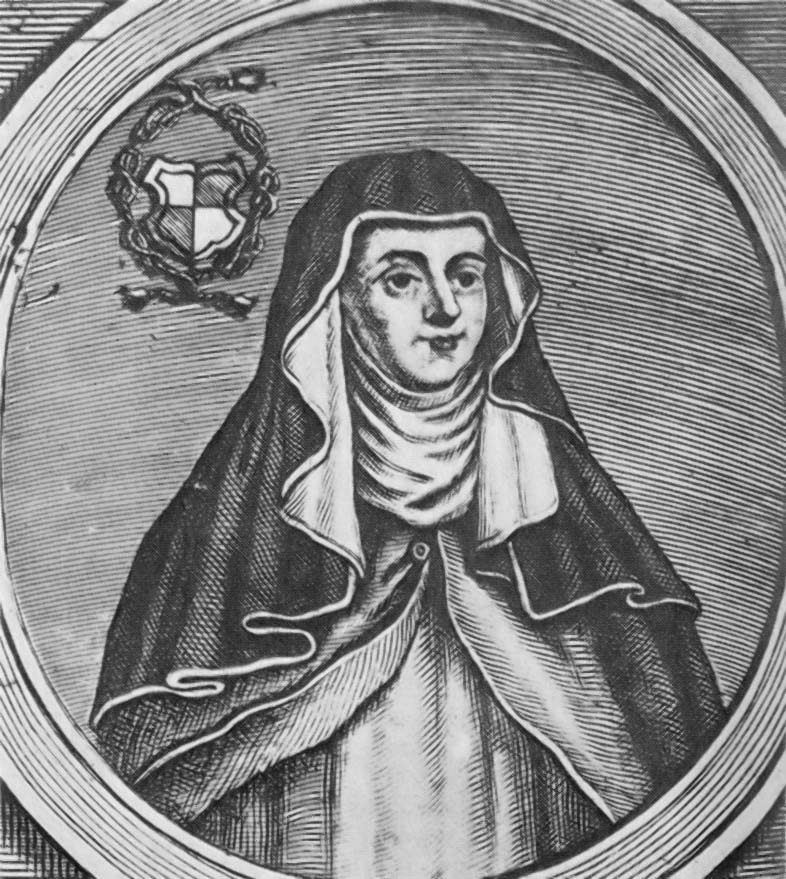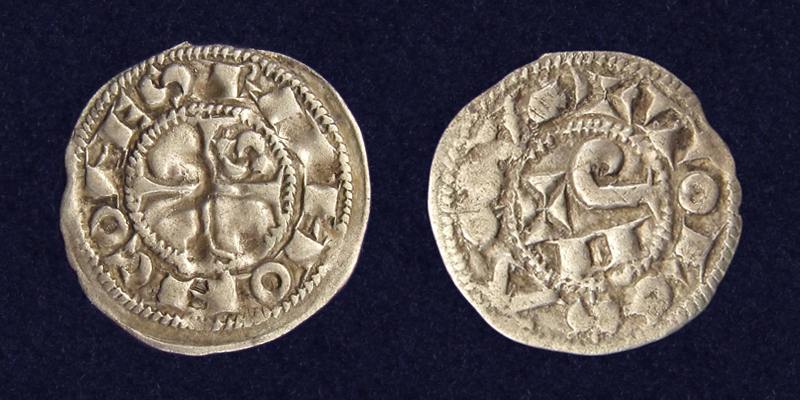|
Alamanda De Castelnau
Alamanda was a trobairitz whose only surviving work is a '' tenso'' with Giraut de Bornelh called '. In the past she was usually considered fictitious and the "''tenso''" was considered a piece of Giraut's writing. However, an Alamanda is mentioned by three other troubadours, including the trobairitz Lombarda, indicating that she was probably real and quite prominent in Occitan poetic circles. Her '' tenso'' with Giraut de Bornelh mirrors in form a '' canso'' by the Comtessa de Dia. The trobairitz is often identified with Alamanda de Castelnau or Castelnou who was born around 1160. She was probably poetically active only briefly while spending her youth at the court of Raymond V of Toulouse (reigned 1148-1194). She left his court to marry Guilhem de Castelnou and later became a canoness of Saint-Étienne at Toulouse, dying in 1223. References Sources *Bruckner, Matilda Tomaryn; Shepard, Laurie; and White, Sarah. ''Songs of the Women Troubadours''. New York: Garland Publi ... [...More Info...] [...Related Items...] OR: [Wikipedia] [Google] [Baidu] [Amazon] |
Trobairitz
The ''trobairitz'' () were Occitania, Occitan female troubadours of the 12th and 13th centuries, active from around 1170 to approximately 1260. ''Trobairitz'' is both singular and plural. The word ''trobairitz'' is first attested in the 13th-century romance (heroic literature), romance ''Romance of Flamenca, Flamenca''. It comes from the Provençal word ''trobar'', the literal meaning of which is "to find", and the technical meaning of which is "to compose". The word ''trobairitz'' is used very rarely in medieval Occitan language, Occitan, as it does not occur in lyrical poetry, grammatical treatises or in the Vida (Occitan literary form), biographies (''vidas'') of the ''trobairitz'' or troubadours. It does occur in the treatise ''Doctrina d'acort'' by Terramagnino da Pisa, written between 1282 and 1296. He uses it as an example of a word the plural and singular of which are the same..: "which are correctly used only with flexional endings in all numbers ... ''trobayritz''" ('' ... [...More Info...] [...Related Items...] OR: [Wikipedia] [Google] [Baidu] [Amazon] |
Canoness
A canoness is a member of a religious community of women, historically a stable community dedicated to the celebration of the Liturgy of the Hours in a particular church. The name corresponds to a canon, the male equivalent, and both roles share a common historical origin. As with the canons, there are two types: canonesses regular, who follow the Rule of St Augustine, and secular canonesses, who follow no monastic rule of life. In the 21st century, the term has come to extend to women exercising the historically male role of canon in some Anglican Anglicanism, also known as Episcopalianism in some countries, is a Western Christianity, Western Christian tradition which developed from the practices, liturgy, and identity of the Church of England following the English Reformation, in the ... context. Many female Anglican clerics however use the title ''canon'' and not ''canoness'' (see ''Male as norm''), e.g., Sarah Foot. Background The involvement of women in the work of t ... [...More Info...] [...Related Items...] OR: [Wikipedia] [Google] [Baidu] [Amazon] |
12th-century French Troubadours
1 (one, unit, unity) is a number, numeral, and glyph. It is the first and smallest positive integer of the infinite sequence of natural numbers. This fundamental property has led to its unique uses in other fields, ranging from science to sports, where it commonly denotes the first, leading, or top thing in a group. 1 is the unit of counting or measurement, a determiner for singular nouns, and a gender-neutral pronoun. Historically, the representation of 1 evolved from ancient Sumerian and Babylonian symbols to the modern Arabic numeral. In mathematics, 1 is the multiplicative identity, meaning that any number multiplied by 1 equals the same number. 1 is by convention not considered a prime number. In digital technology, 1 represents the "on" state in binary code, the foundation of computing. Philosophically, 1 symbolizes the ultimate reality or source of existence in various traditions. In mathematics The number 1 is the first natural number after 0. Each natural num ... [...More Info...] [...Related Items...] OR: [Wikipedia] [Google] [Baidu] [Amazon] |
Year Of Birth Uncertain
A year is a unit of time based on how long it takes the Earth to orbit the Sun. In scientific use, the tropical year (approximately 365 solar days, 5 hours, 48 minutes, 45 seconds) and the sidereal year (about 20 minutes longer) are more exact. The modern calendar year, as reckoned according to the Gregorian calendar, approximates the tropical year by using a system of leap years. The term 'year' is also used to indicate other periods of roughly similar duration, such as the lunar year (a roughly 354-day cycle of twelve of the Moon's phasessee lunar calendar), as well as periods loosely associated with the calendar or astronomical year, such as the seasonal year, the fiscal year, the academic year, etc. Due to the Earth's axial tilt, the course of a year sees the passing of the seasons, marked by changes in weather, the hours of daylight, and, consequently, vegetation and soil fertility. In temperate and subpolar regions around the planet, four seasons are g ... [...More Info...] [...Related Items...] OR: [Wikipedia] [Google] [Baidu] [Amazon] |
Trobairitz
The ''trobairitz'' () were Occitania, Occitan female troubadours of the 12th and 13th centuries, active from around 1170 to approximately 1260. ''Trobairitz'' is both singular and plural. The word ''trobairitz'' is first attested in the 13th-century romance (heroic literature), romance ''Romance of Flamenca, Flamenca''. It comes from the Provençal word ''trobar'', the literal meaning of which is "to find", and the technical meaning of which is "to compose". The word ''trobairitz'' is used very rarely in medieval Occitan language, Occitan, as it does not occur in lyrical poetry, grammatical treatises or in the Vida (Occitan literary form), biographies (''vidas'') of the ''trobairitz'' or troubadours. It does occur in the treatise ''Doctrina d'acort'' by Terramagnino da Pisa, written between 1282 and 1296. He uses it as an example of a word the plural and singular of which are the same..: "which are correctly used only with flexional endings in all numbers ... ''trobayritz''" ('' ... [...More Info...] [...Related Items...] OR: [Wikipedia] [Google] [Baidu] [Amazon] |
1223 Deaths
Year 1223 (MCCXXIII) was a common year starting on Sunday of the Julian calendar. Events January–March * January 4 – Germanus II takes office as Patriarch of Constantinople, leader of the Eastern Orthodox Church, after moving the patriarchate's capital from Constantinople (now Istanbul) to Nicaea (now Iznik in Turkey), as the guest of John III Doukas Vatatzes, Emperor of Nicaea. * January 18 ** Rusudan becomes the new Queen of Georgia after her brother, King George IV, dies of injuries received four months earlier in the Battle of Khunan against the Mongols. **After a failed attempt on December 28, the Mongol General Muqali leads a second attack on the Chinese fortress of Fengxiang and fails. * January 29 – Battle of Viljandi: During a church service, the Sakalians attack the Germans inside the stronghold of Viljandi Castle. The Estonian forces kill members of the Livonian Brothers of the Sword and many merchants. * February 2 – Ireland enjoys i ... [...More Info...] [...Related Items...] OR: [Wikipedia] [Google] [Baidu] [Amazon] |
1160s Births , synthetic chemical element with atomic number 116
{{Numberdis ...
116 (''one hundred and sixteen'') may refer to: *116 (number) *AD 116 *116 BC *116 (Devon and Cornwall) Engineer Regiment, Royal Engineers, a military unit *116 (MBTA bus) *116 (New Jersey bus) *116 (hip hop group), a Christian hip hop collective *116 emergency number, see List of emergency telephone numbers ** 116 emergency telephone number in California *116 helplines in Europe *Route 116, see list of highways numbered 116 * 116 Sirona, a main-belt asteroid See also * 11/6 (other) * *Livermorium Livermorium is a synthetic chemical element; it has symbol Lv and atomic number 116. It is an extremely radioactive element that has only been created in a laboratory setting and has not been observed in nature. The element is named after the La ... [...More Info...] [...Related Items...] OR: [Wikipedia] [Google] [Baidu] [Amazon] |
Internet Archive
The Internet Archive is an American 501(c)(3) organization, non-profit organization founded in 1996 by Brewster Kahle that runs a digital library website, archive.org. It provides free access to collections of digitized media including websites, Application software, software applications, music, audiovisual, and print materials. The Archive also advocates a Information wants to be free, free and open Internet. Its mission is committing to provide "universal access to all knowledge". The Internet Archive allows the public to upload and download digital material to its data cluster, but the bulk of its data is collected automatically by its web crawlers, which work to preserve as much of the public web as possible. Its web archiving, web archive, the Wayback Machine, contains hundreds of billions of web captures. The Archive also oversees numerous Internet Archive#Book collections, book digitization projects, collectively one of the world's largest book digitization efforts. ... [...More Info...] [...Related Items...] OR: [Wikipedia] [Google] [Baidu] [Amazon] |
Toulouse
Toulouse (, ; ; ) is a city in southern France, the Prefectures in France, prefecture of the Haute-Garonne department and of the Occitania (administrative region), Occitania region. The city is on the banks of the Garonne, River Garonne, from the Mediterranean Sea, from the Atlantic Ocean and from Paris. It is the List of communes in France with over 20,000 inhabitants, fourth-largest city in France after Paris, Marseille and Lyon, with 511,684 inhabitants within its municipal boundaries (2022); its Functional area (France), metropolitan area has a population of 1,513,396 inhabitants (2022). Toulouse is the central city of one of the 22 Métropole, metropolitan councils of France. Between the 2014 and 2020 censuses, its metropolitan area was the third fastest growing among metropolitan areas larger than 500,000 inhabitants in France. Toulouse is the centre of the European aerospace industry, with the headquarters of Airbus, the SPOT (satellites), SPOT satellite system, ATR ( ... [...More Info...] [...Related Items...] OR: [Wikipedia] [Google] [Baidu] [Amazon] |
Tenso
A ''tenso'' (; ) is a style of troubadour song. It takes the form of a debate in which each voice defends a position; common topics relate to love or ethics. Usually, the tenso is written by two different poets, but several examples exist in which one of the parties is imaginary, including God ( Peire de Vic), the poet's horse ( Bertran Carbonel) or his cloak ( Gui de Cavalhon). Closely related, and sometimes overlapping, genres include: * the '' partimen'', in which more than two voices discuss a subject * the '' cobla esparsa'' or '' cobla exchange'', a tenso of two stanzas only * the ''contenson'', where the matter is eventually judged by a third party. Notable examples * Marcabru and Uc Catola''Amics Marchabrun, car digam'' possibly the earliest known example. * Cercamon and Guilhalmi''Car vei finir a tot dia'' another candidate for the earliest known example. * Raimbaut d'Aurenga and Giraut de Bornelh''Ara·m platz, Giraut de Borneill'' where major exponents of the two st ... [...More Info...] [...Related Items...] OR: [Wikipedia] [Google] [Baidu] [Amazon] |
Raymond V Of Toulouse
Raymond V (; c. 1134 – c. 1194) was Count of Toulouse from 1148 until his death in 1194. He was the son of Alphonse I of Toulouse and Faydida of Provence. Alphonse took his son with him on the Second Crusade in 1147. When Alphonse died in Caesarea in 1148, the county of Toulouse passed to his son Raymond, then aged 14. Raymond co-ruled with his brother Alfonso II. The young count was honoured by Rorgo Fretellus, archdeacon of Nazareth, who dedicated a new edition of his ''Description of the Holy Places'' to him. As count, Raymond permitted the first assembly of townsmen in Toulouse, the origin of the later capitouls. In 1165, in the town of Lombers, the bishop of Albi, attended by both clerics and members of the nobility, including Constance, the wife of Raymond V, interrogated and debated with members of an alleged heretical sect. Calling themselves "Good Men", this group held beliefs similar to those of Henry of Lausanne and Peter of Bruys as well as indicating ... [...More Info...] [...Related Items...] OR: [Wikipedia] [Google] [Baidu] [Amazon] |





